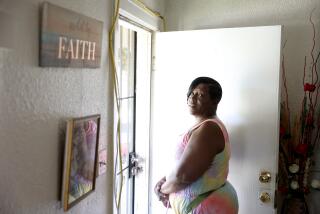A foster care winner for California
The federal government offers funding to help states provide human services such as health and foster care, and that’s fine as far as it goes. But sometimes the money comes with the wrong strings. For example, the feds for too long paid states to pluck abused or neglected children from their homes and put them in foster care, even after California learned that it’s more cost effective and better for the kids to move them out of the program and into the homes of extended family members who, with a little financial help, can take care of them. Now the feds have caught up and provide funding, when appropriate, to steer kids out of the child welfare system while providing them the support they need to grow up and transition to college, jobs and adulthood.
This time it’s California’s turn to catch up. Lawmakers should pass Assembly Bill 12 and send it to the governor. AB 12, by Democrats Jim Beall Jr. of San Jose and Karen Bass of Los Angeles, would align California with federal law in ways that would help youth in need twice -- and pull in federal funding, also twice, to pay much of what the state now pays.
The bill would allow the state to collect from Washington half the costs of steering kids out of the child welfare system and into family guardianship, so the state would save money off the top. There is an echo benefit: Numerous studies show that children growing up with extended family have far lower incidences of teen pregnancy, homelessness, delinquency and mental health problems than those living in group homes or with foster families.
There’s a second layer of direct savings as well. Youths who age out of the foster care system at 18 are often ill-equipped for independence, and the state sometimes assists them through age 21. A partial federal reimbursement is available for that transition period -- but only if the state adopts AB 12 and aligns its program with federal guidelines. The state portion comes from the savings realized from federal participation in the guardianship program. And there is a second echo benefit, as the young adults who otherwise would fall into county programs would be more likely to be able to make it on their own.
With a $20-billion budget gap, California needs every penny it can get from the federal government, and now that the child welfare money actually can be spent on helping youth rather than supporting outmoded programs, the state must grab it. Too often, rules limit the usefulness of federal money. Not this time. AB 12 allows the state to multiply the power of its dollars many times over. Lawmakers should not miss the rare chance to simultaneously save money and help Californians in need.
More to Read
Get the L.A. Times Politics newsletter
Deeply reported insights into legislation, politics and policy from Sacramento, Washington and beyond. In your inbox three times per week.
You may occasionally receive promotional content from the Los Angeles Times.










